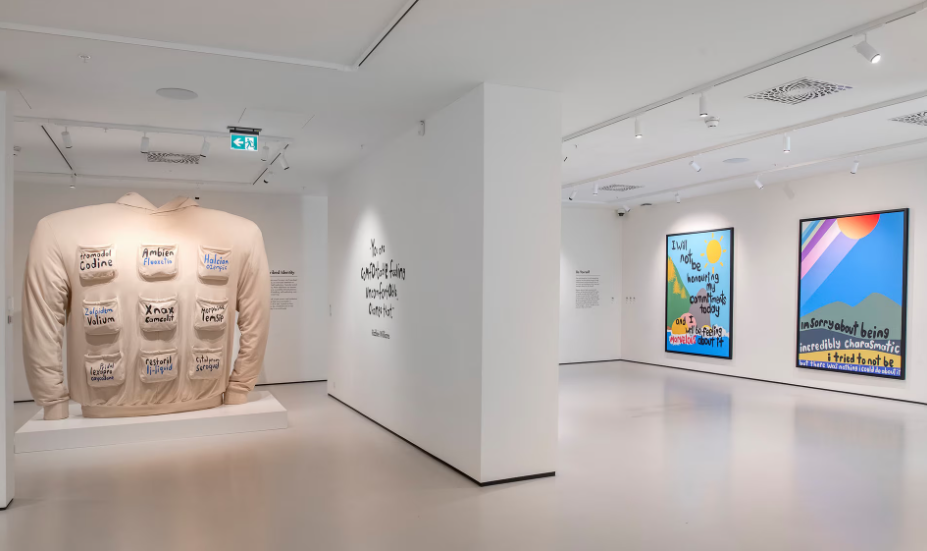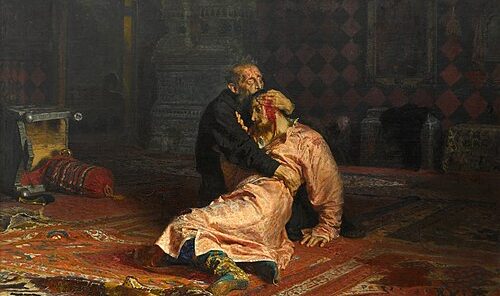By Mariam Karagianni,
It’s hard not to hold prejudice when you hear that yet another famous celebrity/influencer/nepo-baby/whatever has decided to get in touch with their “artistic side” and hold a gallery exhibition. But in truth, they do not help me at all either. Looking at the paintings of the twice Academy Award winner, actor and producer Adrien Brody, I sighed with disdain. The displayed artwork was reminiscent of a very distasteful blend of Warhol, Villeglé, and Rosenquist, mixed with what he thinks is a true Americana representation (e.g. Marilyn Monroe, Marge Simpson); almost like a throwaway Basquiat on acid. This all comes with a complimentary prosecco on the side, in one of the world’s leading contemporary galleries in New York City. In fact, if you drink enough of it, you might turn a blind eye to the pixelated and low-quality paintings (that don’t sell for under 300 thousand dollars each!).
Yet it’s not just Adrien Brody that is the problem. When travelling, I tend to avoid any galleries that display the word “contemporary” on them. When you look at a painting, it must procure an emotion in you; in fact, each brushstroke, each deliberate line and shadow and coloring serves a specific role. It attunes to a specific nerve in your brain and stirs a respective emotion. It’s the connecting bridge between you and the artist; the feelings are raw, palpable and transmissive. You might get that if you take a look at Ilya Repin’s oil canvas “Ivan the Terrible and His Son Ivan”, or for a more modern example, Francis Bacon’s “Study After Velázquez’s Portrait of Pope Innocent X”. It’s almost like you are in the same room as Ivan the Terrible, watching the young man bleed out to his death, or as if you are sitting next to a caged Pope, listening to his sharp screeches. However, the new wave of contemporary art does nothing of the sort. The canvases do not speak anymore; they borrow an aesthetic not belonging to them, channeling “profound” performances of pain and suffering, forgoing their context completely. And the end result is a bunch of overpriced, soulless paintings that make your eyes bleed.

In a world where everything is labeled as a statement, I find it’s quite the oxymoron that nothing really says anything. Art has become too afraid to bleed. We see artists borrowing from the geniuses of Basquiat, Pollock, and Warhol; in their works, we see that one fought against racial violence, one depicted the chaos of the subconscious through abstract expressionism, and the other criticized overconsumption and superficiality. Yet, in the imitators’ works there’s no genius to be found. I don’t want to say that the new generation is untalented either—that would be an injustice to a ton of undiscovered diamonds. However, it is true that they are being rewarded for minimal effort, zero emotional labor, maximum aesthetic, and quirky titles; this is no resurgence of expressionism but the Rupi Kaur-ification of minimalistic painting. Goya’s dismembered martyrs and Kollwitz’s haunted lines are replaced by pastel strokes and canvases titled “Untitled (Thoughts on Identity)”.
A major factor in this tragic decline in one of the most beautiful forms of human expression is the gradual disappearance of structured commentary and criticism on works of art. And to fill that open space, cultural influencers, algorithms, and galleries have taken the lead. But their main goal is to attract and sell products, and to entertain the public into doing so. They could never achieve what good, constructive criticism does: to analyze and contextualize what we see and even challenge our opinions. That, as a result, ends in a homogenization of taste, where the absence of a cultured perspective is loud and clear and the public is left without any tools to interpret the art in question. Because that’s the job of writers, scholars, other artists, and journalists: to guide us through it all. Whatever critical discourse might exist is used to validate dominant choices.
Everything seems pre-approved. Anyone in the audience who is not complacent and says: “Hey, I don’t think this is good,” may be told that they are stifling the creative expression of the artists and be labeled as old-fashioned and close-minded. Genuine criticism is replaced by political correctness, confrontation of ideas seems like a practice of the past, and the relationship between the art and the public is weakened. You might ask, where is the craftsmanship? Where is the skill? Where is the talent? Where is the pathos? They respond with yet another exhibition of sterile and forgettable pieces. In truth, not everyone is meant to be an artist, and that’s (shocker) okay. Because sometimes the kindest thing you can do for them is to tell them that their “art” is not moving anyone and that, in fact, not every expression can be labeled as such. And not every canvas splattered in colors needs a gallery.

This scourge of marketable pastiche and palatable pseudopolitics is also partly the fault of the galleries. The same institutions turning away the Impressionists are the same ones that roll out their red carpets for heirs of hedge fund managers who spend a couple of months living in Montmartre and think they grew Van Gogh’s missing ear. Everything is all about marketing and exposure. Nuance doesn’t sell that well. I stand by the notion that art must disrupt the comfortable and comfort the disrupted. But today, everything is all about comfort. Paintings once carried pathos, political meaning, and captured the state of the world. They did not dabble in safe waters to satisfy an audience that broke down when critical thinking was required. “The Death of Marat” by Jacques-Louis David was used for political propaganda at the peak of the French Revolution, and Honoré Daumier’s “Rue Transnonain” depicted how the political unrest of that time resulted in a massive massacre of the French. Political turmoil, propaganda, and war are more relevant than ever given the current state of global affairs. But artists, in a world that’s burning, are preoccupied with painting the smoke—not the fire.
This article is not a call to turn to classical art and realism. Because the style pales in comparison to intent. What we need is not some digestible, soft food for our minds but something that echoes the message of the painter from every angle. We need art that will risk being ugly, misunderstood, scandalizing, controversial, demanding, and raw. We need art that is educational and that will withstand the passing of time like a good old Da Vinci has. There’s no reason for art to appeal to everyone; that’s the beauty of it.
And so what Adrien Brody—and countless like him—need to do is not cosplay the ghosts of the better men before him, but put down those brushes and ask themselves, “Why am I painting in the first place?” And until they find an answer to that which is satisfactory, I will keep snubbing their galleries as I have until now: intellectually and aesthetically insulted and in search of something authentic.




